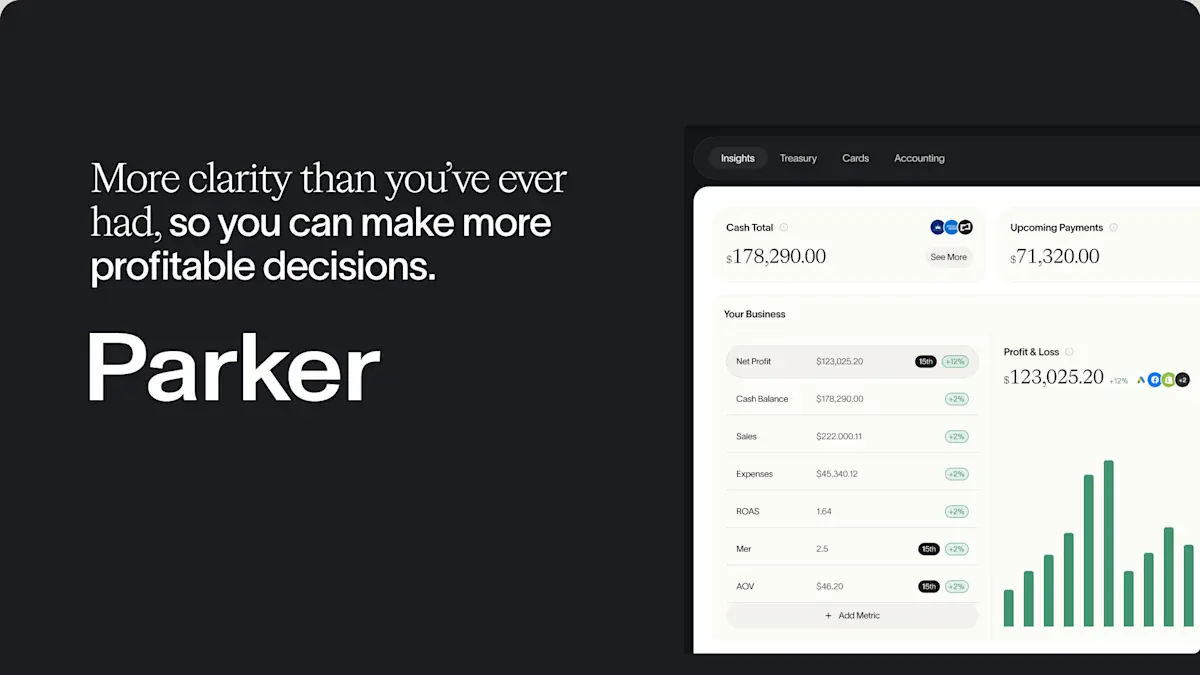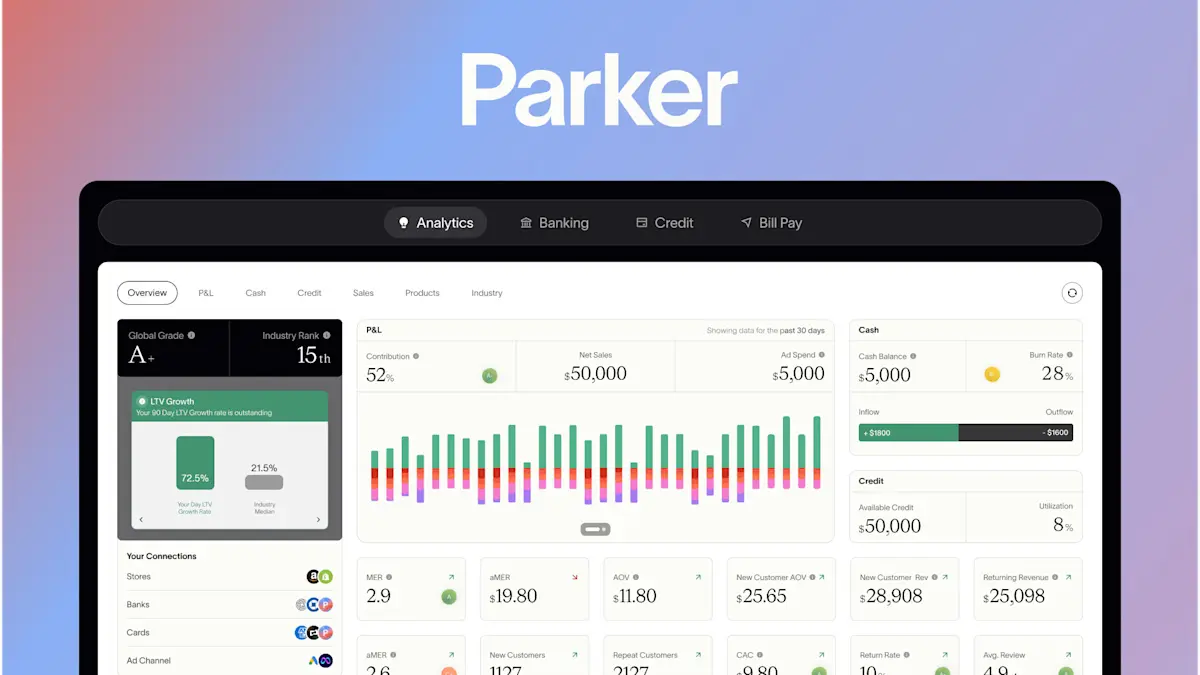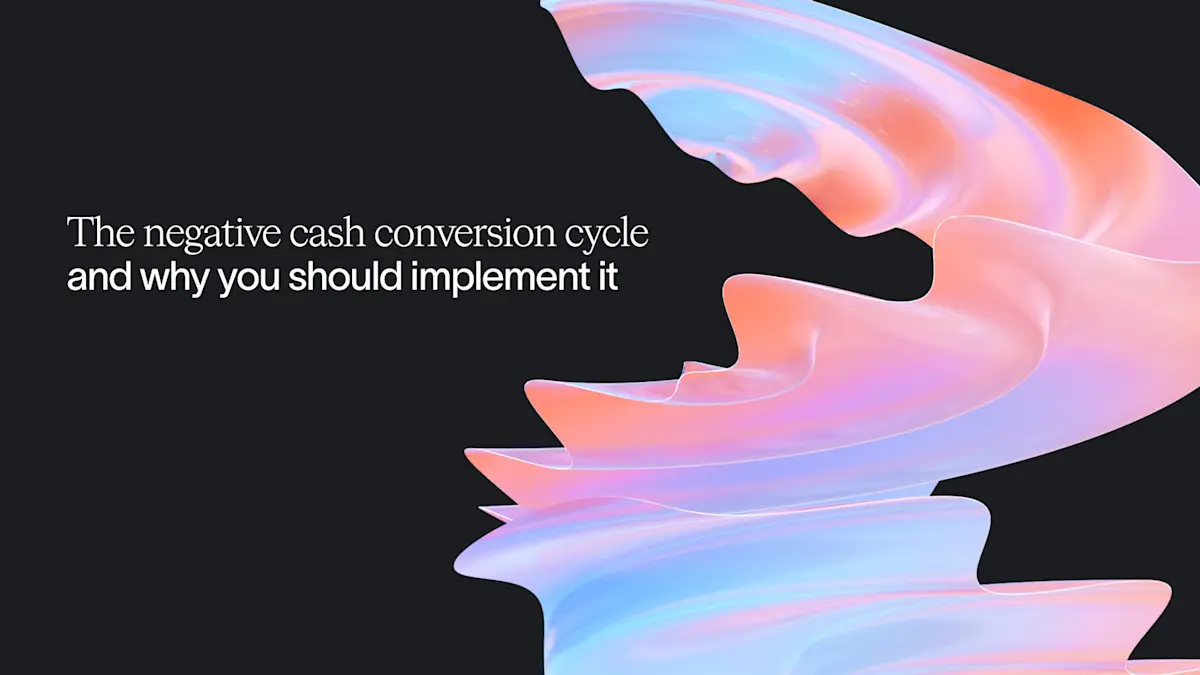What the Perfect Ecommerce P&L looks Like

At Parker, our flagship product is a card for e-commerce companies. This means that a large part of our business succeeding means picking winners — or, at the least, companies that don’t crash and burn. As the head of our underwriting team, it’s been my job for the past few years to pick those winners.
I've reviewed thousands of e-commerce P&Ls across a wide range of categories and business models. And while each company is unique, I've noticed a consistent pattern among the top performers. The most profitable e-commerce brands tend to maintain a remarkably similar expense ratio across four core categories (with some notable exceptions):
- 30% cost of goods sold (COGS)
- 30% marketing & advertising
- 30% fulfillment & platform Fees
- 10% owner compensation
Of course, there will always be some variance around this 30/30/30/10 framework based on factors like product niche, target audience, and growth stage. But in general, sticking to these ratios puts companies in the best position for healthy margins and scalability over time.
In this essay, I'll unpack each component of this P&L structure in more detail. I'll share real-world benchmarks from our customers, discuss the most common pitfalls to avoid, and offer practical strategies for optimization. Consider this a behind-the-scenes look at how we assess credit risk and performance potential at Parker.
My hope is that by sharing our underwriting framework, I can provide founders with a helpful roadmap for crafting a P&L that's built for long-term success. So let's dive in.
1. COGS: The foundation of profitability
In an ideal world, COGS should hover around 30% of revenue, leaving a healthy 70% gross margin. But for many brands, it's an uphill battle to get there. Excessive COGS puts immense pressure on pricing and margins — if you're spending $50 to source an item you retail for $100, there’s little room for error. Any uptick in costs or dip in pricing power will destroy your bottom line.
Negotiating with suppliers, diversifying manufacturers, and optimizing shipping and logistics are all levers to reduce COGS. But this is a gradual process — establishing an efficient, resilient supply chain from the start is critical. As the saying goes, it's a marathon, not a sprint.
Even small improvements can have an outsized impact. Consider a skincare brand whose COGS ran at 45% of revenue. By renegotiating key supplier contracts and streamlining fulfillment over two quarters, they could feasibly get that down to 35%. That extra 10% of revenue would flow straight to the bottom line.
The bottom line:
When I see businesses with COGS significantly above the 30% threshold, it gives me pause. In my experience, it's a red flag that often correlates with unsustainable economics and subpar performance over time. Bringing COGS under control is one of the toughest challenges in e-commerce — but it's also one of the most important over the long term.
2. Marketing: Fueling the top line
For most e-commerce companies, marketing is the second largest expense after COGS, typically around 30% of revenue. But the actual ratio can vary widely based on factors like product category, target audience, and brand positioning.
A differentiated brand in an emerging category can get away with lower ad spend than a "me too" product in a saturated market. The former has organic growth and word-of-mouth working in its favor, while the latter has to fight tooth and nail for every eyeball and click.
I worry less about temporarily elevated marketing costs because it's an easier dial to turn down than COGS. With expert help and real-time feedback loops, brands can often rapidly optimize spend and creative. But consistently pouring over 50% of revenue into ads is not sustainable unless it's generating a highly efficient 4x or higher return on ad spend (ROAS). Below 2x ROAS, you're in a tough spot.
Imagine a jewelry brand allocating 45% of revenue to marketing. At first glance that seems high. But if they're achieving a 6x ROAS on TikTok thanks to a unique, visually-appealing product and organic creator buzz, it could be a highly profitable strategy. The key is rigorous attribution tracking to know what's actually working.
Just remember, attribution isn't always clear cut. Facebook and Google may both take credit for the same sale, so use data directionally and consider harder-to-measure impacts on factors like brand awareness.
The bottom line:
Of all the major expense categories, marketing is the one I tend to worry about least — as long as the ROAS is there. With the right data and controls in place, it's usually possible to quickly adjust spend to dial in on an efficient, profitable ratio. That said, brands in competitive markets will naturally need to spend more to stay competitive.
3. Fulfillment: Driving efficiency at scale
Fulfillment and platform fees (think Shopify, Amazon, 3PLs) typically eat up around 30% of revenue. While that may seem like a lot, it's obviously a critical investment in creating a seamless customer experience and building loyalty over time.
The challenge is, operational hiccups in fulfillment can quickly balloon costs, so this is an area where scale and systems are key. Excessive Amazon FBA fees or 3PL storage costs usually point to suboptimal inventory management and forecasting. The more you can streamline fulfillment, the more you can invest back into growth and product expansion.
Let's say an apparel brand discovers their 3PL storage fees and shipping costs are 15% above industry benchmarks. By digging in, they realize inventory turn is too slow and they're using expensive air freight to avoid stockouts. With better demand planning to increase inventory turns and ship by sea, they could bring fulfillment costs down by 10% within a quarter.
The bottom line:
Fulfillment is an area where scale and systems matter a ton. The more you can streamline operations, optimize inventory management, and leverage economies of scale, the more you can invest back into growth and product expansion. Even small improvements in fulfillment efficiency can have a meaningful impact on overall margins and profitability.
4. Owner comp: Paying yourself sustainably
Finally, the profit line. Owners should pay themselves market salaries, but total owner comp should remain around 10% of revenue (or less) — especially in the early years. E-commerce is a lean model, so if this ratio swells, it can signal misplaced spending or an overly top-heavy org structure.
The bottom line
As a founder, it's crucial to strike a balance between paying yourself fairly and maintaining discipline on expenses. Remember, your goal is (probably) to create equity value over time — not just maximize short-term take-home pay.
Red flags that signal major risks
When evaluating an e-commerce company's P&L, there are a few key imbalances that can quickly spiral out of control:
- COGS at 50%+ or marketing at 50% = unlikely path to profitability
- Marketing spend above 50% is a red flag unless offset by extraordinary ROAS
- Lack of ANY profit margin signals potential issues with the core business model
At Parker, we don't expect applicants to perfectly nail this P&L structure on Day 1. We do look for positive trajectories in these key ratios over time. If a company has strong revenue growth and sufficient runway, I'm confident in their ability to achieve these margins at scale. The problems arise when cash dries up before reaching that threshold.
The reality is, most founders are experts in one core function like marketing or product development. Very few excel equally across all dimensions. That's why strategic hiring, agencies, and partnerships are so important to build a well-rounded team that can optimize each moving piece in the model.
In my experience, the 30/30/30/10 framework is a helpful rule of thumb for assessing the health and scalability of an e-commerce business. While it's not a hard-and-fast rule, it provides a useful benchmark for identifying potential red flags and areas for improvement. By sharing it here, my goal is to give founders a peek behind the curtain at how we assess performance and potential — and ultimately, provide a roadmap for architecting a profitable, high-growth P&L from the ground up.
Related Articles
Ready to Join the Financial Revolution?





